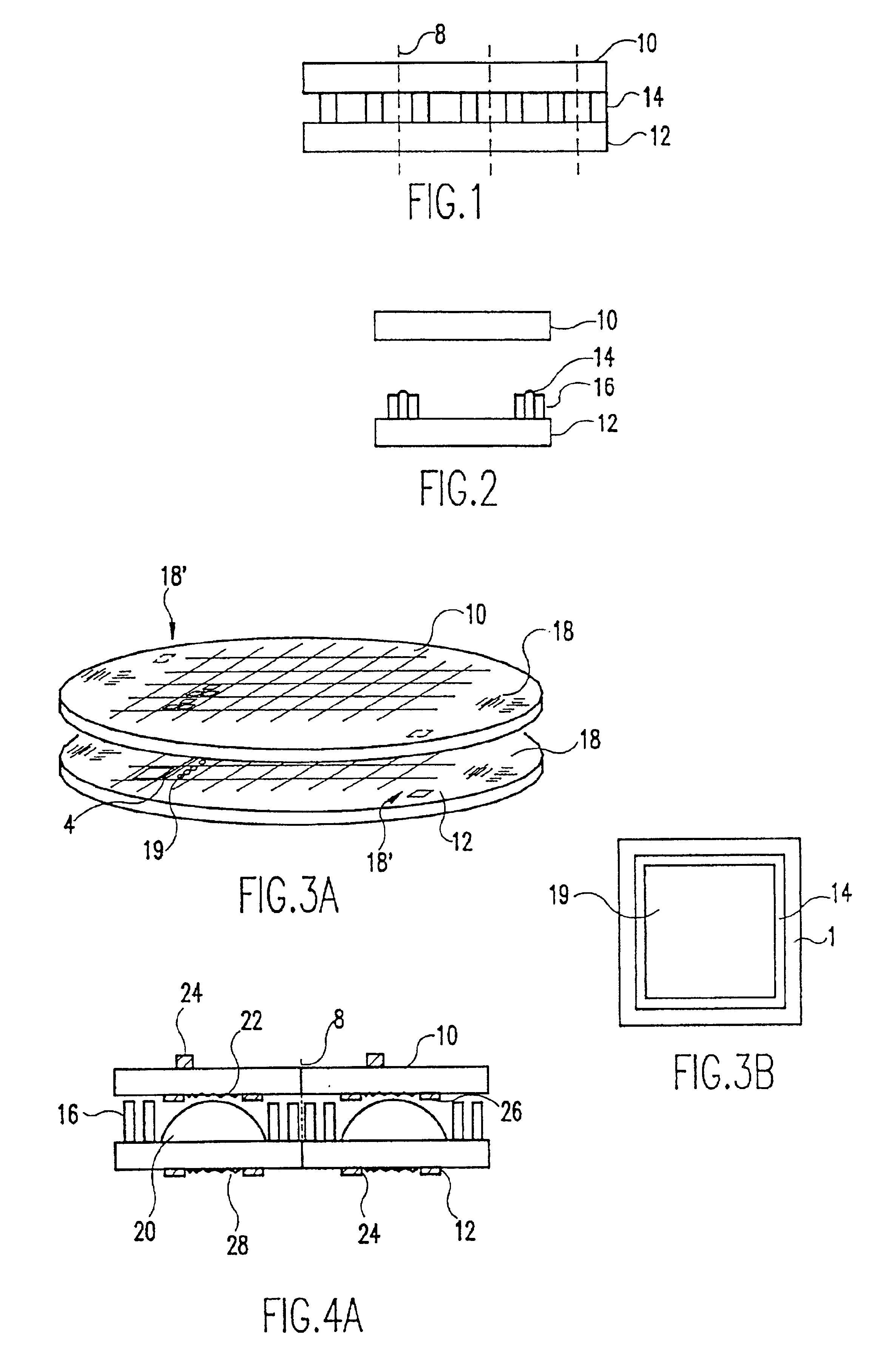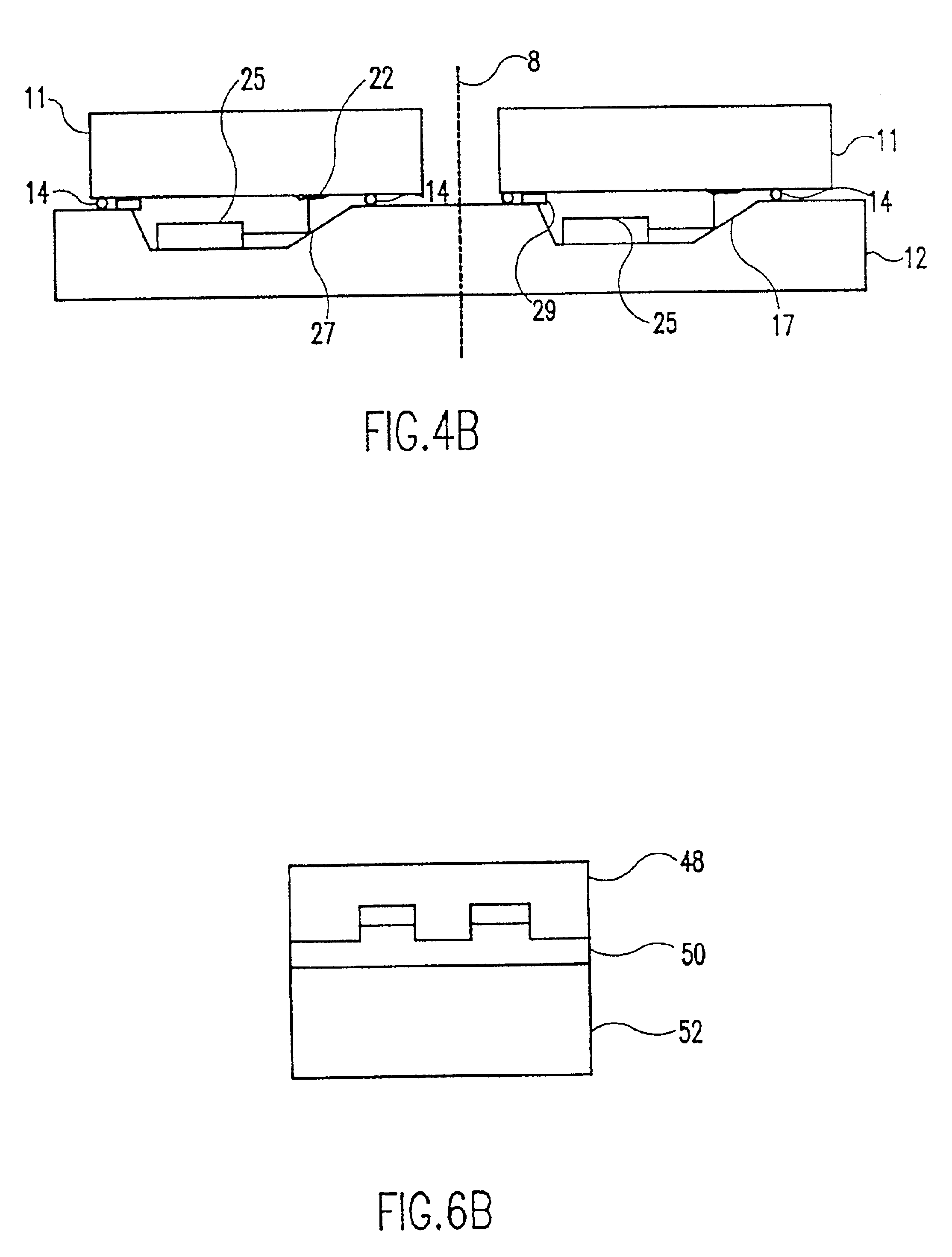Wafer level creation of multiple optical elements
- Summary
- Abstract
- Description
- Claims
- Application Information
AI Technical Summary
Benefits of technology
Problems solved by technology
Method used
Image
Examples
Embodiment Construction
As can be seen in FIG. 1, a first substrate wafer 10 and a second substrate wafer 12 are to be bonded together in order to provide integrated multiple optical elements. A wafer is a disc, typically 4, 6, 8, or 12 inches in diameter and typically having a thickness between 400 microns and 6 mm.
These wafers have an array of respective optical elements formed thereon on either one or both surfaces thereof. The individual optical elements may be either diffractive, refractive or a hybrid thereof. Dashed lines 8 indicate where the dicing is to occur on the wafers to provide the individual integrated elements.
A bonding material 14 is placed at strategic locations on either substrate in order to facilitate the attachment thereof. By surrounding the optical elements which are to form the final integrated die, the adhesive 14 forms a seal between the wafers at these critical junctions. During dicing, the seal prevents dicing slurry from entering between the elements, which would result in co...
PUM
| Property | Measurement | Unit |
|---|---|---|
| Power | aaaaa | aaaaa |
| Area | aaaaa | aaaaa |
| Opacity | aaaaa | aaaaa |
Abstract
Description
Claims
Application Information
 Login to View More
Login to View More - R&D
- Intellectual Property
- Life Sciences
- Materials
- Tech Scout
- Unparalleled Data Quality
- Higher Quality Content
- 60% Fewer Hallucinations
Browse by: Latest US Patents, China's latest patents, Technical Efficacy Thesaurus, Application Domain, Technology Topic, Popular Technical Reports.
© 2025 PatSnap. All rights reserved.Legal|Privacy policy|Modern Slavery Act Transparency Statement|Sitemap|About US| Contact US: help@patsnap.com



